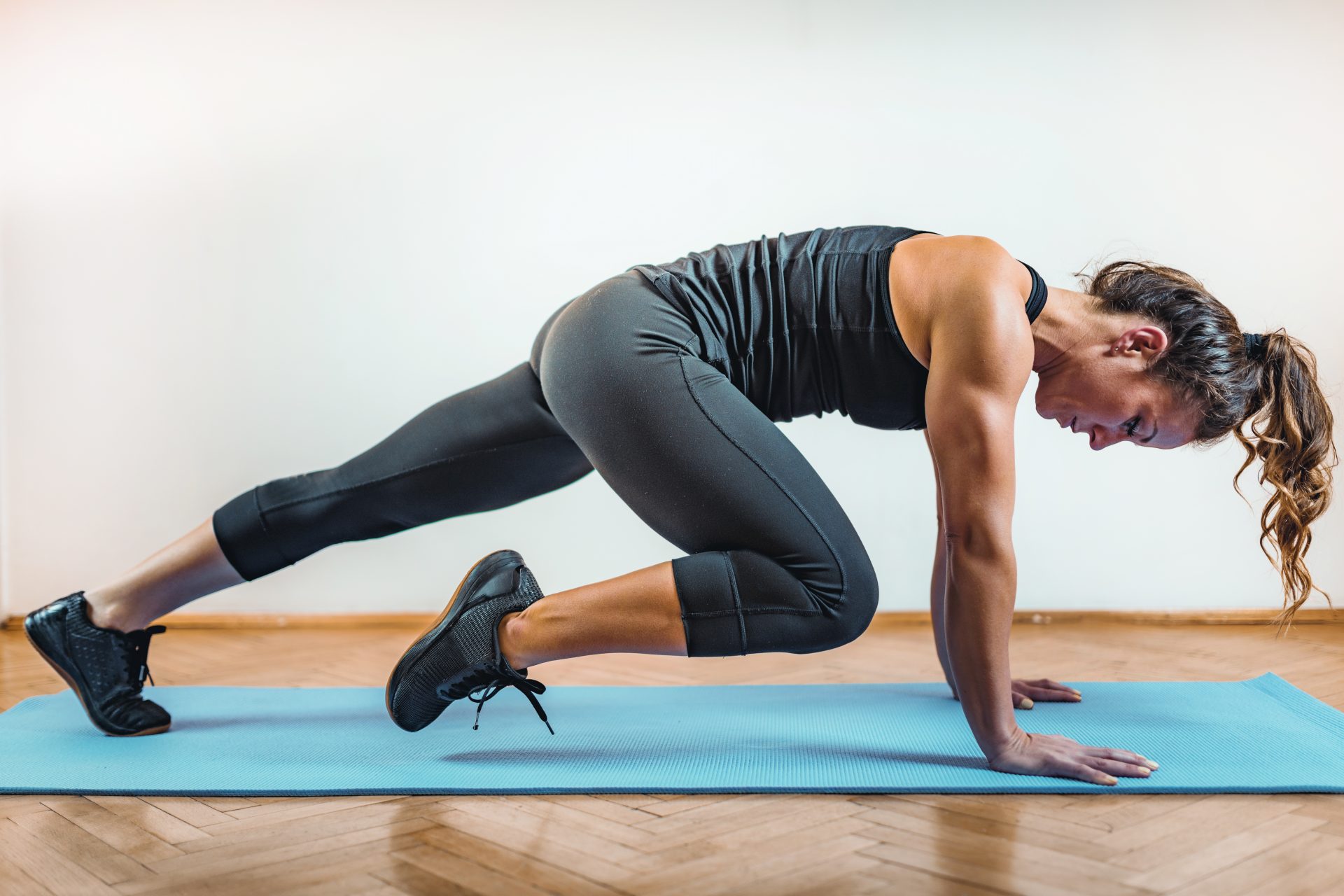Written by Chloe Gray
Like the sound of a HIIT session that lasts just four minutes? Here’s what you need to know about Tabata.
Right now, time is of the essence. Regardless of the fact that so many of us are still saving hours on commuting by working from home, foregoing late-night dates and no longer packing weekends full of trips away, we don’t seem to have actually gained any extra hours of leisure.
Perhaps that’s because we’re finding it hard to disconnect from our work, spending longer than pre-Covid times chained to our desk, or maybe because we are spending more time supporting others who are more vulnerable.
Whatever the reason, we’re simply strapped for time. But streamlining your training can help you save some. That means short but effective training, like focusing on compound exercises. If you’re training from home, high-intensity training can be a useful tool. That’s where styles like HIIT and Tabata come in.
The latter is a lesser-known type of workout, but it’s a great one to learn about. So, we turned to member of the Strong Women Collective Emma Obayuvana to explain exactly what it is, how it works and how to do it.
What is Tabata?
Tabata is a form of HIIT that focuses on really short, intense bursts of exercise followed by a very quick rest. It’s structured as 20 seconds of max-effort work, and 10 seconds of rest, and can be done as part of a larger workout or in isolation.
“If you had done a strength training session or something a little bit more slow-paced but you wanted to finish with a big push, then you would pick one exercise and perform it in a Tabata style for eight rounds, meaning the session would be our minutes long,” Emma explains. “But you could also pick six exercises and do eight cycles of Tabata to create a 30-minute workout that you could do on it’s own.”
The important thing here is to choose exercises that are simple – complete sequences won’t work as you’ll only be able to get a few reps out in the allotted 20 seconds. It’s the same with heavily weighted exercises – not only will you only be able to get out one or two reps of heavy barbell squats, for example, but it’s also dangerous to rush through loaded exercises.
Instead, try some of Emma’s go-to Tabata moves:
- Burpees
- Mountain climbers
- American kettlebell swings
- Jump squats
- Plank down-ups

What are the benefits of tabata?
“The idea is that Tabata is the optimal time for your aerobic performance and recovery,” says Emma. A review of Tabata style training in the Journal of Physiological Sciences shows that this training method is effective for improving maximum oxygen uptake, a key indicator of fitness, by up to 15%.
That translates to other sports and training that we do to increase overall athletic performance, improve endurance and help our bodies become more efficient at coping under pressure.
Not to mention, a four-minute workout that pushes you to max effort can’t be sniffed at for those of us who live busy lives.
Source: Read Full Article
